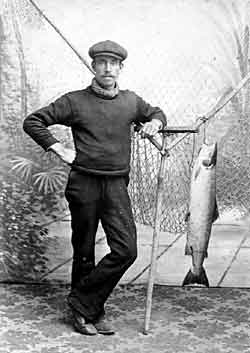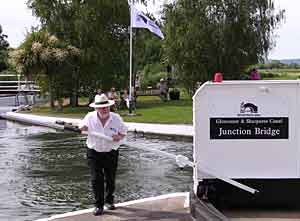Jack Workman's great grandfather, Henry Workman, moved to Sharpness soon after the new dock opened in 1874 and worked there as a corn porter (docker). Jack's grandfather, James Henry Workman was a lockgateman at Sharpness, handling ropes from ships entering and leaving the dock. James Henry Workman (picture right) was also a keen salmon fisherman in his spare time. As the tide was going down, he joined other men with lave nets wading through the shallow water covering the sands off Sharpness, looking for the tell-tale wake made by the fin of a salmon. When one was spotted, the fisherman started running, and the chase continued until the fish was scooped up in his net. Even when Jack's grandfather was nominally on watch at the pier-head, he spent much of his time looking down into the pools under the piers, and if he saw a salmon trapped, he was quickly down there with his net. As a child, Jack virtually lived on salmon and eels from the Severn, as his father was also a keen fishermen. Jack remembers sitting on his father's shoulders to help spot a salmon better. As there were other fishermen about, Jack was told not to shout but just to pat his father on the head and point. |
|




